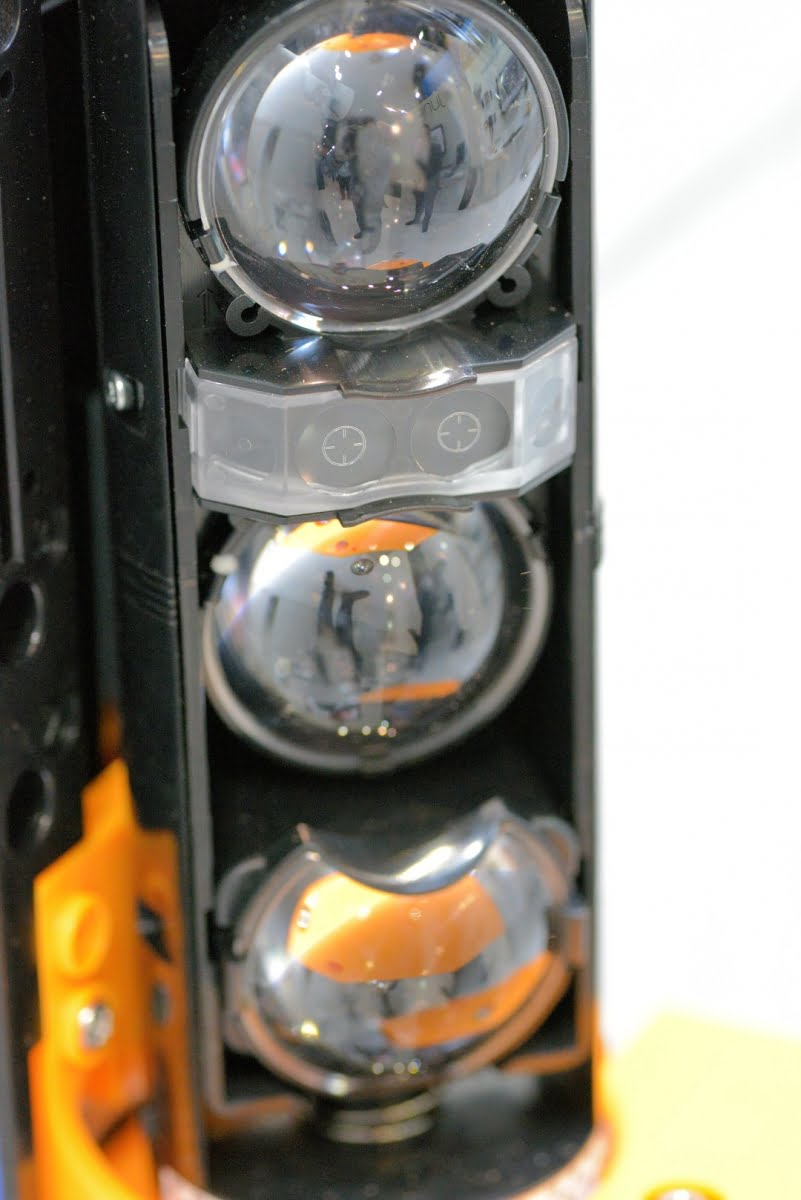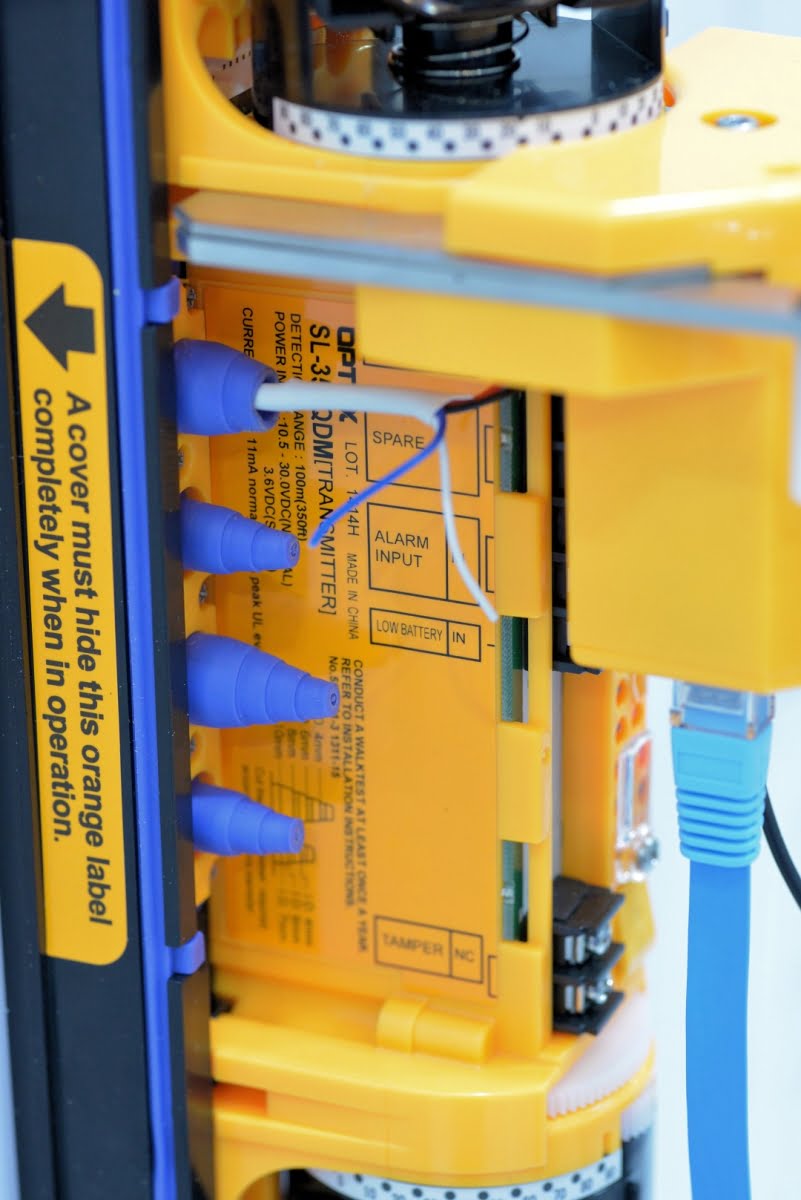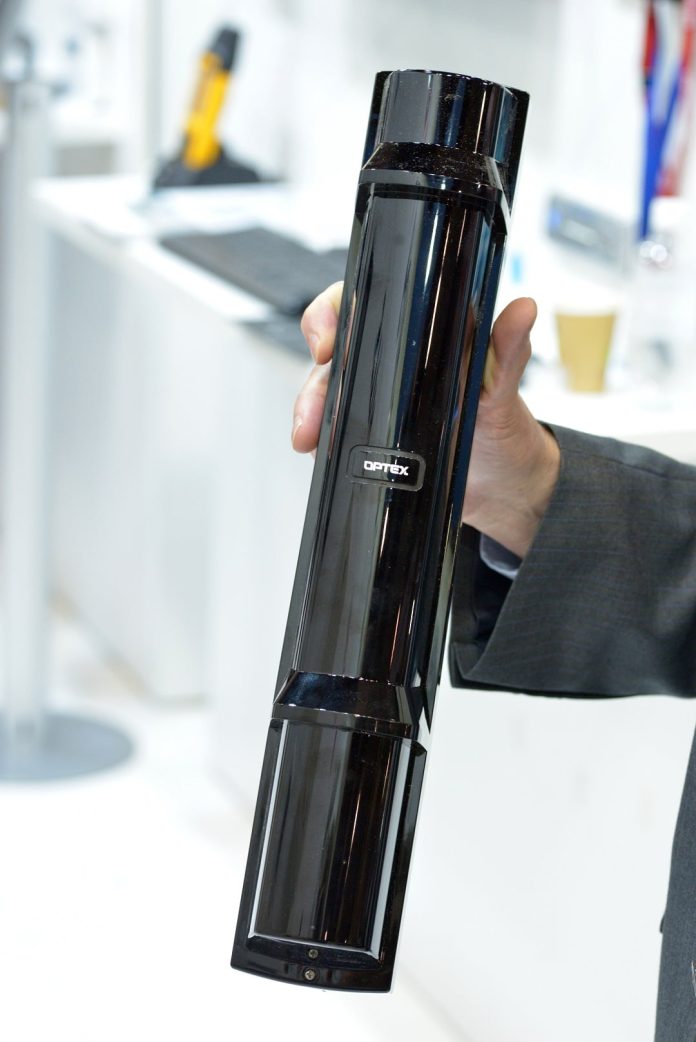Optex SmartLine SL-350QDM is an active infrared photoelectric detector designed for external applications. The unit is fitted with a range of features that improve installation, reliability and catch performance in rugged outdoor applications.
OPTEX SmartLine SL-350QDM photoelectric beam, distributed locally by Hills, includes even more features to protect against false and missed alarms caused by mis-alignment and environmental issues. The new features combined with the unit’s 110m of outdoor detection range and 4-channel beam frequency selection, make the QDM model perfect for high security perimeter applications.
New features include dual modulation, which enhances signal discrimination against potential interferences, quad beam, which dramatically cuts down on false alarms caused by birds and falling leaves. There’s also a new Sniper ViewFinder and Alignment Sound Assist. The new telescope lens on the SL Series has a high level of visibility for optical alignment work and even at 110m, a perfect installation and stable performance can be achieved in minimal time.

This sensor also features Optex’s Sunshine Protection Technology. The SL Series has triple-layer construction to allow for better performance against external light sources. (The sun, car headlights, mercury-vapour lamps and fluorescent lights). There’s also Beam Power Control Selector, which allows installers to manually adjust the beam power to help prevent crosstalk due to reflection, interference due to unstable signal or noise when using multiple beams over long distances, and allows the detector to be used in shorter than rated distances.
Meanwhile, Automatic Transmit Power Control automatically controls, adjusts and optimizes the power of the beam and maintains optimal performance. This decreases false and missed alarms caused by fog, frost, cross talk and signal saturation. This sensor is BAU-4-Compatible and the BAU-4 beam alignment unit automatically and accurately adjusts the optical access. This allows peak performance and gives one technician the ability to align a 350ft or 650ft SL detector without additional help.
“AIRS beams are an excellent and affordable detection solution for external applications that can support video surveillance monitoring of alarm events”
There’s quad beam detection, double modulated beam – enhances signal discrimination against potential interferences, slim body design, easy-to-see vivid interior colour for optical alignment, IP65 waterproof structure, 4-channel beam frequency selector, alignment level indicator, viewfinder with 2x magnification, heater option for cold climates (HU-3, sold separately), UL/c-UL listed, beam interruption adjustment function and D.Q. circuit (environmental disqualification).
There’s also tamper function, beam power control selector, alarm memory, sound assist function, optical alignment, beam reception status, walk test, Integrated Alignment Status Communication (I.A.S.C) to communicate the transmitter and receiver, re-transmitting circuit function, solar Battery Unit SBU-4 (option), and BAU-4-compatible (BAU-4 Automatic beam alignment tool sold separately).

The alarm output is a form C relay of 30 VDC, 0.2 A, current consumption is 26mA with a maximum of 60mA, operating temperating is -35C to +60C. Dimensions are 17.6-inches high by 3.1-inches wide and 3.8-inches deep. The high power quad beams have high grade aspherical lenses, there’s an anti-frost hood design and this unit can be stacked in beam towers.
Choosing a quality photoelectric sensor
There are a number of features any good quality AIRS unit should have. Remember that these units are designed to be installed outdoors and that means they're going to be assaulted by the elements. Look for a polycarbonate enclosure that's weatherproof and dustproof. Any metal fittings or brackets should be resistant to corrosion and of robust construction.
In terms of operational features, you want defogger, defroster and heating elements, as well as an attenuating alarm indicator that indicates the presence of fog. Look for anti-tamper, anti-climb, low beam dispersal, angle adjustment and DSP discrimination between objects like birds and moving branches or leaves, and intruders. You want the sensor to be able to recognize an object's size and speed of travel. To achieve this, a dual or quadruple sensor beam is used. You should also make sure stacks have a spring-loaded anti-climb switch built in and always activate the anti-masking feature. For higher security sites ensure beams in towers with a number of sensors located above each other. Something else that’s vital is anti-crawl beams.
From the point of view of installers, a clever idea is to install multiple stacks in overlapping fields so the location of one stack is protected by the cover of another. This technique will also give a more complex beam pattern, improving overall site coverage. And look for units designed to avoid cross talk when multiple stacks are being used.
Another useful feature that should be deployed if your sensor offers it is programmable interruption time. This lets installers set sensors up to ignore the swift passage of birds or the movement of wildlife. Try to make sure any AIRS sensor you buy has screening to protect the receiver from the effects of strong natural light that might blind it. Look for double modulation. This second frequency confuses learning remotes and ensures they can’t beat your defences. The best systems use 4 IR beams to deliver 16 separate beam paths between transmitter and receiver.
Quality AIRS beams like this Optex SmartLine SL-350QDM are an excellent and affordable detection solution for external applications that can support video surveillance monitoring of alarm events. This technology doesn’t take up a large footprint, making it ideal for narrow boundary lines and current draw and the installation requirements are minimal. Carefully installed AIRs is highly recommended. ♦











